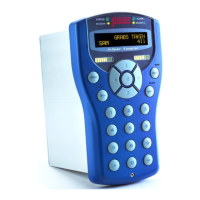, with extensions for handling 32bit IEEE
floating-point numbers, 32bit integers (including alarms) and Strings.
The InSpec supports Modbus RTU and ASCII over serial ports and ModbusTCP over Ethernet and
TCP/IP.
Modbus serial works in a master / slave configuration. This means that one, and only one, of the nodes
on the network is designated as master and all the others are designated as slaves. The master has a list of
queries for each slave and transmits this to the entire network. Each slave reads all the queries, discarding any
not intended for it. Modbus can be configured on the two serial ports simultaneously, if available, allowing
communication dual redundancy.
The InSpec can operate simultaneously as both a ModbusTCP master and a slave. ModbusTCP does
not have the limitation of having only one master per port. Therefore, multiple masters can poll the InSpec for
data at the same time. This greatly reduces the need for multiple ports especially when combined with the much
higher throughput of Ethernet / ModbusTCP.
9.2 Invalid addresses
Accessing any invalid Modbus address will result in an error packet being returned. When addressing
many Modbus addresses in one query you must make sure all addresses are valid, as any invalid address will
result in the error packet being returned.
9.3 MODBUS Serial Set-up
Modbus runs over a serial communication line that must be configured before data may be sent and
received. The communications port type is configured within the menu as are the pull up/down resistors and line
termination options. If RS422 or RS485 is chosen the system will be in a multi-dropped configuration.
The user can only configure the port from the menu if in engineer mode, protocol mode, word order,
node number, baud rate and parity for the connection must be chosen. These must be the same on both the
slave and master units.
NOTE: If you select no parity then there are 2 stop bits, if you select odd or even parity then there is only
1 stop bit, as per the Modicon Modbus standard.
9.4 Ethernet ModbusTCP Setup
To use ModbusTCP, you will need to configure the IP settings under the system menu item with your
local administrator.
9.5 Node Number
This is the identifying number for the slave unit, a Modbus master does not have a node number. When
a query is to be addressed to a node it will include the node number. All units attached to the cable will receive
the query, but only the specified node will reply to it. In standard Modbus, using a node address of 0 will cause all
attached units to reply to the query, but this feature is currently not supported on the InSpec controller.
In ModbusTCP slave the IP address of the InSpec is the instrument identifier, and the node number is
ignored by InSpec ModbusTCP slaves. However, it is possible that other clients make use of the node number
when polled from the ModbusTCP master.
9.6 Mode
There are two basic modes for Modbus serial, ASCII and RTU. RTU is the faster of the two as it has
greater character density, while the ASCII format is more human readable and less prone to timing errors.

